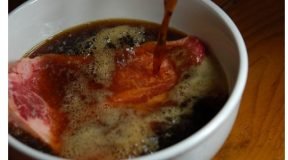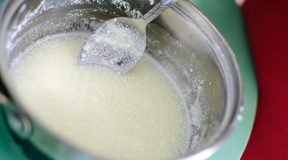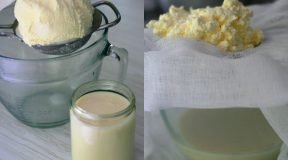Cheesequake: A simple slice of American cheese with more processing than Cher’s voice offers up some surprisingly useful geology lessons.To learn how fractures in earth’s crust develop by pulling on the edges of a slice of cheese.
Learning Goals
Helps students develop an understanding of the complex processes of fracture propagation and fault growth via simple and fun experiments. Demonstrates the importance of small cracks in the distribution of stresses in cheese (and rocks) and the growth of larger fractures, and shows the value of analog models.
Materials:
- Pre-sliced pieces of American cheese
Procedure:
- Make a small cut parallel to the edge of the cheese slice, in the middle
of the slice. - Pull on the edges of the cheese that are parallel to the cut, therefore in a perpendicular direction to the cut.
- As you slowly tear the cheese apart, have students observe how the shape of the growing fracture grows and how it develops faster as it gets larger.
- Using a new slice of cheese, make two cuts in the middle of the cheese approximately one inch apart and offset from each other diagonally. Repeat the above tearing process and observe how the fractures grow with this slice of cheese. As the tips of these fractures begin to grow past each other, they will also be gin to curve towards each other and eventually join to produce a single fracture.
Science Behind It:
This demo represents creating tension fractures. Fractures like these occur in Earth’s crust by the
pulling of tectonic forces. As you pull on the edges of the cheese slice, you create tensional forces throughout the volume of the slice. If there is an imperfection or break in the slice (or Earth’s crus
t), the tension cannot pass through it. Therefore, the tension becomes concentrated around the tips of the break and increases as the fracture grows. The increase in tension makes it easier for the fracture to expand. When the two cuts in the cheese curve toward s each other and “combine, it is because the
tension can not be transferred in a straight line across the space between the two cuts. Tension fractures are important in understanding earthquakes and earthquake prone areas. These types of fractures are also present as deep cracks in glaciers, are responsible for volcanic eruptions in Hawaii, and are seen readily in asphalt roads.
source:http://www.psd1.org/cms/lib4/WA01001055/Centricity/Domain/36/Fractures_in_Cheese.pdf






